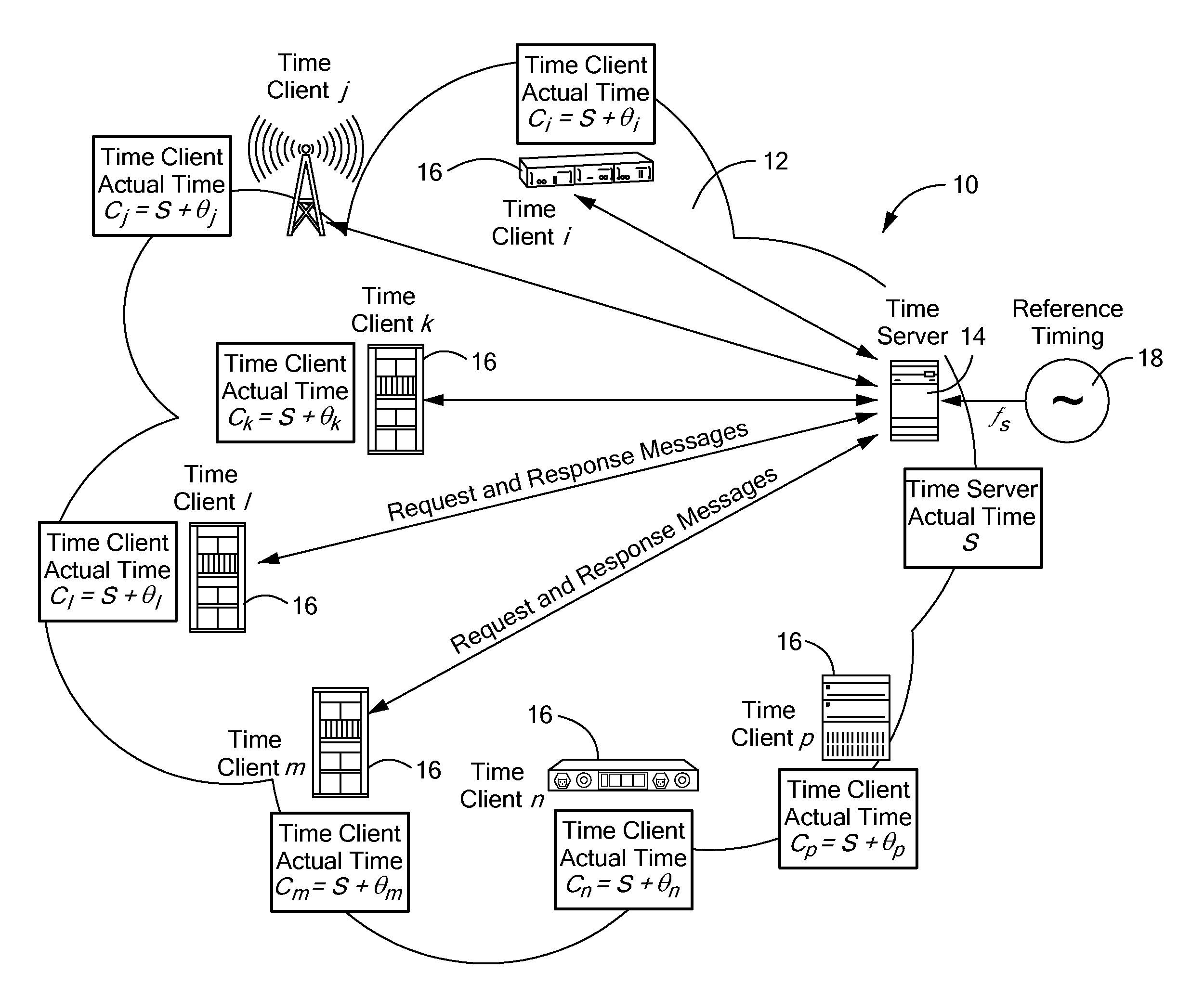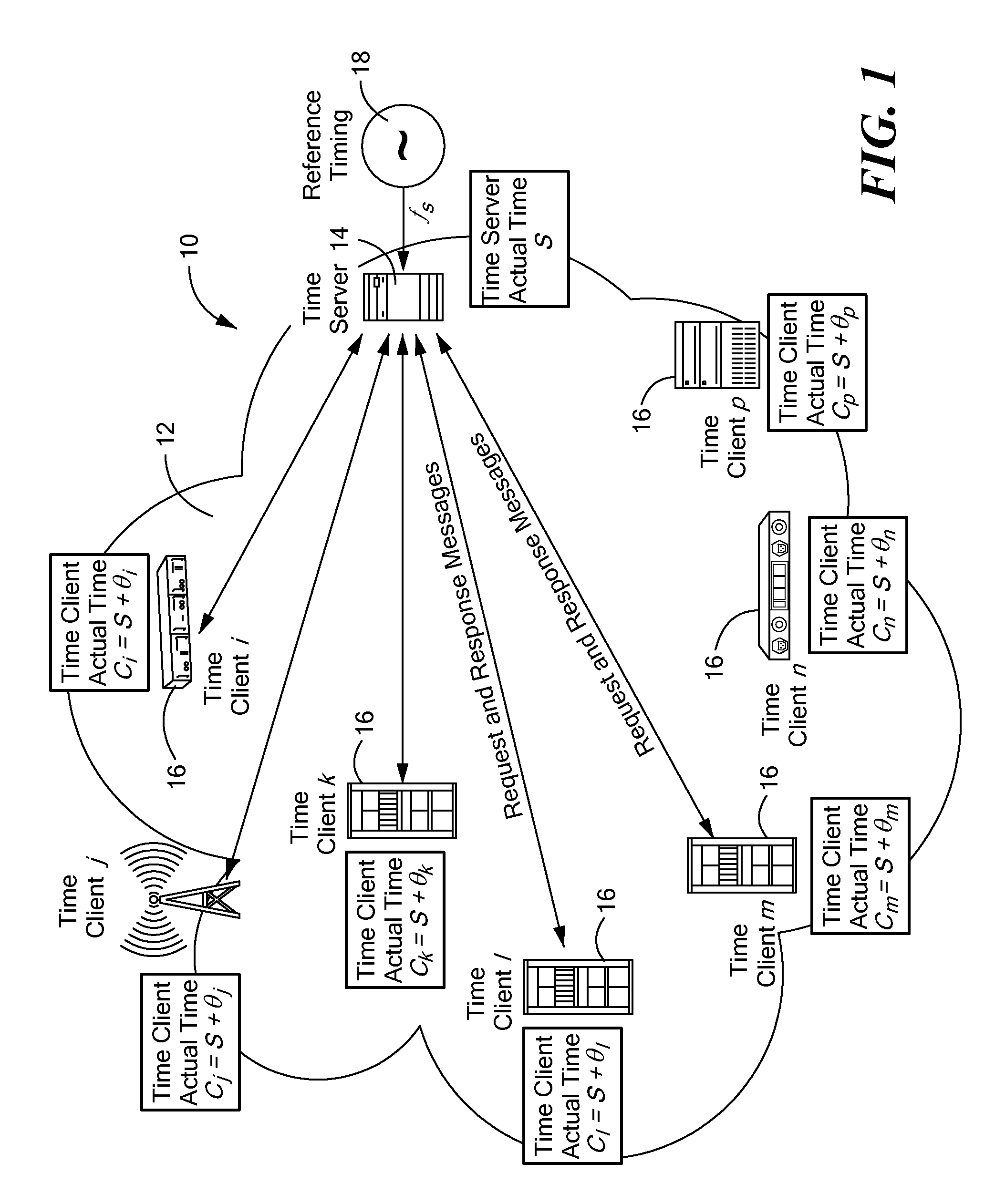Method and apparatus for time and frequency transfer in communication networks
a technology of communication network and time and frequency synchronization, applied in multiplex communication, generating/distributing signals, instruments, etc., can solve the problems of inability to accurately correlating information between devices, jitter and wander in packet networks carrying timing-sensitive services, and limited scalability of time division multiplex (tdm) networks,
- Summary
- Abstract
- Description
- Claims
- Application Information
AI Technical Summary
Problems solved by technology
Method used
Image
Examples
Embodiment Construction
[0030]It is to be understood that both the preceding summary and the following detailed description are exemplary and explanatory and are intended to provide further explanation of the invention as claimed. Neither the summary nor the description that follows is intended to define or limit the scope of the invention to the particular features mentioned in the summary or in the description. The present invention provides a method and system synchronizing timing between a time server and a time client over a packet network.
[0031]The present invention can be implemented in a packet network over which time and frequency are transferred. A central timing system is provided which consists of a time server and timing transfer node (e.g., router, switch, gateway, wireless access point, etc.), and time clients (e.g., router, switch, gateway, wireless access point, desktop computer, laptop, personal digital assistant (PDA), VoIP phone, data server, etc.). The communication between a timer ser...
PUM
 Login to View More
Login to View More Abstract
Description
Claims
Application Information
 Login to View More
Login to View More - R&D
- Intellectual Property
- Life Sciences
- Materials
- Tech Scout
- Unparalleled Data Quality
- Higher Quality Content
- 60% Fewer Hallucinations
Browse by: Latest US Patents, China's latest patents, Technical Efficacy Thesaurus, Application Domain, Technology Topic, Popular Technical Reports.
© 2025 PatSnap. All rights reserved.Legal|Privacy policy|Modern Slavery Act Transparency Statement|Sitemap|About US| Contact US: help@patsnap.com



